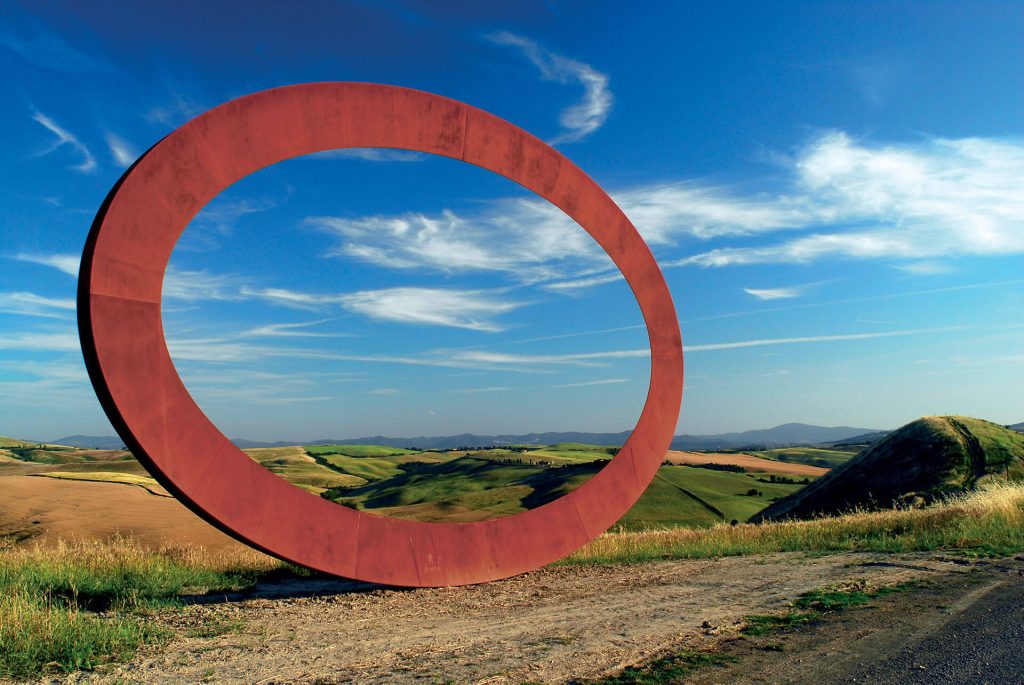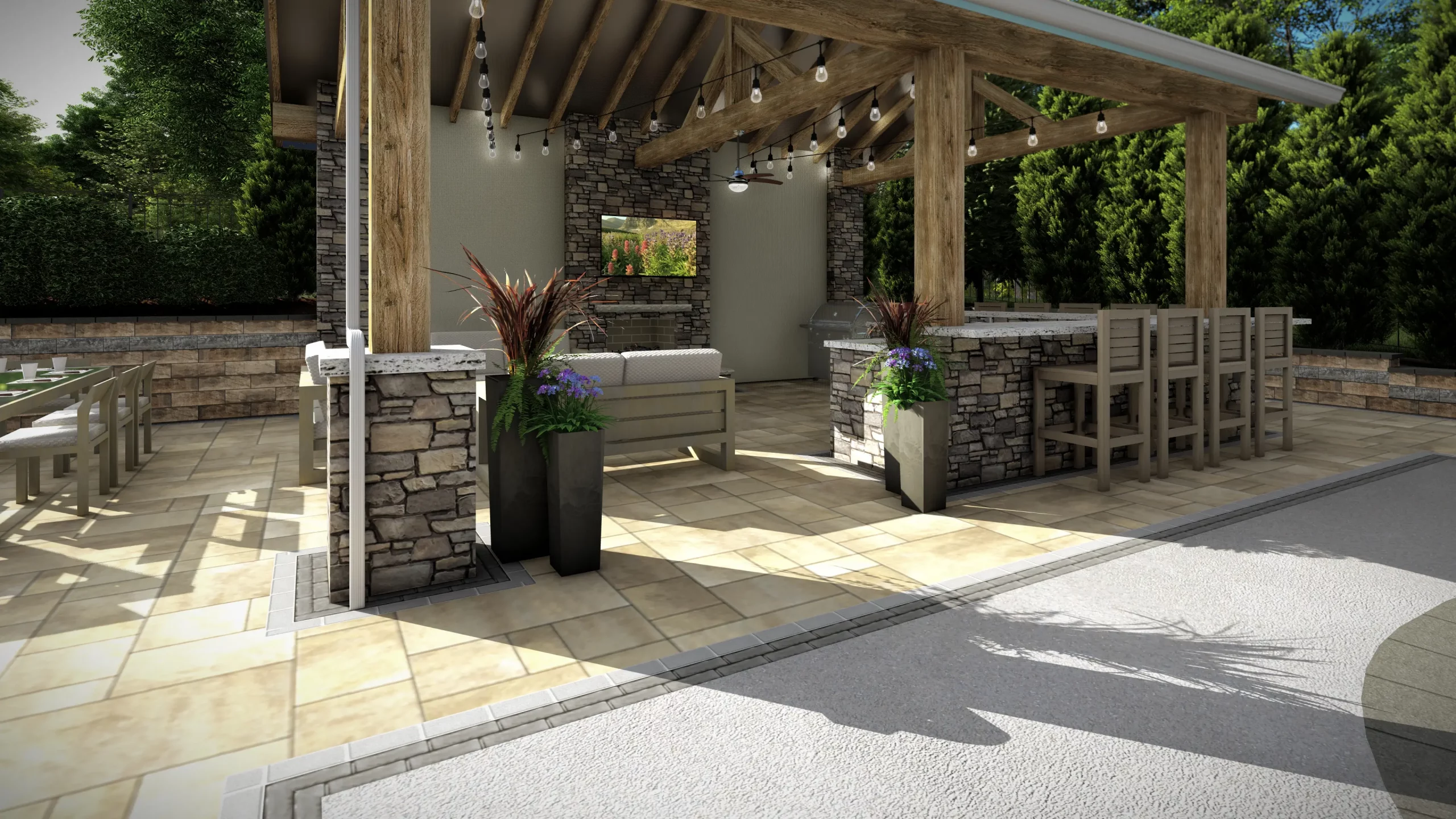Corten steel, known for its unique weathered appearance and robust durability, has become a popular material in European architecture and landscaping. Our Marketing Director was in Europe this past May and she noticed an abundance of Corten steel structures while on vacation. Aesthetic appeal is of high importance and blends effortlessly with the historical building design. Out of curiosity, she asked a few store owners and locals about why they choose Corten steel and the main response she received was an recognition and appreciation of the sustainability and character that Corten brings to the surrounding area. This blog post will explore some of the reasons behind its widespread use and highlights some notable examples. Enjoy!

Historical and Cultural Appeal
Architectural Heritage: Europe’s rich architectural history blends old and new styles, and Corten steel’s rustic, weathered look complements this fusion beautifully. It provides a bridge between historical structures and contemporary designs, enhancing the aesthetic harmony. Pictured above is the world renowned Angel of the North. Located to the northeast of England, designed by renowned British sculptor, Antony Gormley, this remarkable sculpture has been watching over the region since 1998. Crafted from Corten steel, the Angel of the North stands 20 meters tall with an impressive wingspan of 54 meters, making it larger than a Boeing 757 airplane. The use of Corten steel ensures its endurance against the sometimes harsh northern weather, allowing it to withstand wind speeds of over 100 miles per hour. It was designed to last for more than a century, symbolizing the region’s transition from an industrial past to a promising future.
Art and Design Movements: European designers and artists have a long history of innovation with new materials. Corten steel’s distinctive look and adaptability have made it a favorite among those seeking to push the boundaries of design. The rust-like patina of the Angel of the North, a characteristic feature of Corten steel, was part of Gormley’s initial vision for the sculpture. This appearance connects the sculpture to the industrial heritage of the region, while its modern design points towards the future. Today, the Angel of the North is not only an iconic landmark of Gateshead but also one of the most recognizable symbols of the UK, demonstrating the unique potential of Corten steel in crafting meaningful public art.

Environmental and Practical Considerations
Climate Suitability: The varied European climate is ideal for Corten steel, which develops its protective patina through exposure to moisture and air. This makes it particularly suited to outdoor applications across Europe, where it can withstand diverse weather conditions.
Sustainability Focus: With Europe’s stringent environmental regulations and a strong emphasis on sustainability, Corten steel’s durability and recyclability align well with these values. Its long lifespan reduces the need for frequent replacements, minimizing waste. Pictured above is Chemin des Carrières located in Rosheim, France. This trial bridge was designed by Reiulf Ramstad in 2019. The desire to create a route to serve the quarries had to adapt to the undulating landscapes of the sub-Vosges hills and the very form of the tracing tells the history of the landscape and the men. The journey to discover forgotten landscapes or to take a different view on everyday landscapes is addressed to both local users and tourists. Like the old track that offered a dual function (industrial and passenger transport), the route has a double vocation where the functional must rub shoulders with the imaginary of travel. Corten steel has been used for bridge construction since the 1930’s and will continue to grow in popularity as we come to embrace sustainability as a NEED rather than a want.

Aesthetic Preferences
Modern and Minimalist Trends: European design often favors clean lines and minimalist aesthetics. Corten steel’s industrial look fits seamlessly into this context, offering a raw yet refined appearance that enhances modern landscapes and structures. If you take a moment to look at the buildings surrounding the Broadcasting Station in Leeds, UK, you will notice that there are structures that date back to the 1700’s and the versatility of Corten allows for the seamless integration of new buildings. Modern with a blend of antique!
Integration with Nature: There is a deep tradition in Europe of integrating architecture with nature. Corten steel’s natural weathering process and earthy tones help create a harmonious connection between built environments and their natural surroundings.

Specific Applications in Europe
Public Art and Sculptures: Many European cities feature public art and sculptures made from Corten steel. Its unique appearance and durability make it an excellent choice for creating impactful and lasting public artworks. The above Corten steel sculpture was designed by Mauro Staccioli. The work, which was originally located in Piancorboli, was moved to Tenuta MonteRosola due to landslide problems. Piancorboli was linked to the artist’s childhood memories. The large Corten steel ellipse that framed the panorama from the ancient contrada of Montebradoni – the village where Staccioli lived until he came of age – to the Balze, from the church of San Giusto to the outline of Volterra, defined a kind of perspective telescope that in the foreground revealed a long abandoned farmhouse, the home of his maternal grandparents, the scene of his first steps and his first approach to the Tuscan farming tradition.
Urban Landscaping: Corten steel is widely used in urban landscaping projects, including park benches, planters, and retaining walls. Its weathered look adds an organic feel to public spaces, contributing to the modern yet natural aesthetic that is highly valued in European urban design.
Corten steel’s combination of aesthetic appeal, practical benefits, and alignment with European design preferences has made it a favored material across the continent. Its ability to bridge historical and modern contexts, alongside its sustainability credentials, ensures its continued popularity in European architecture and landscaping. Whether in public art, urban landscaping, or architectural heritage projects, Corten steel continues to make a significant impact on the European design landscape. To sum it all up, Corten is timeless, full of character, and pairs seamlessly with the surrounding environment.

